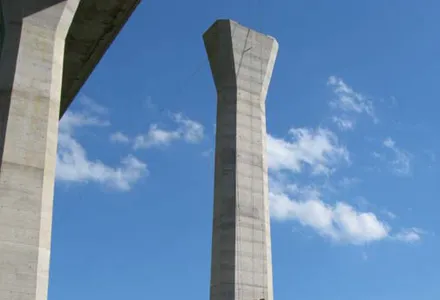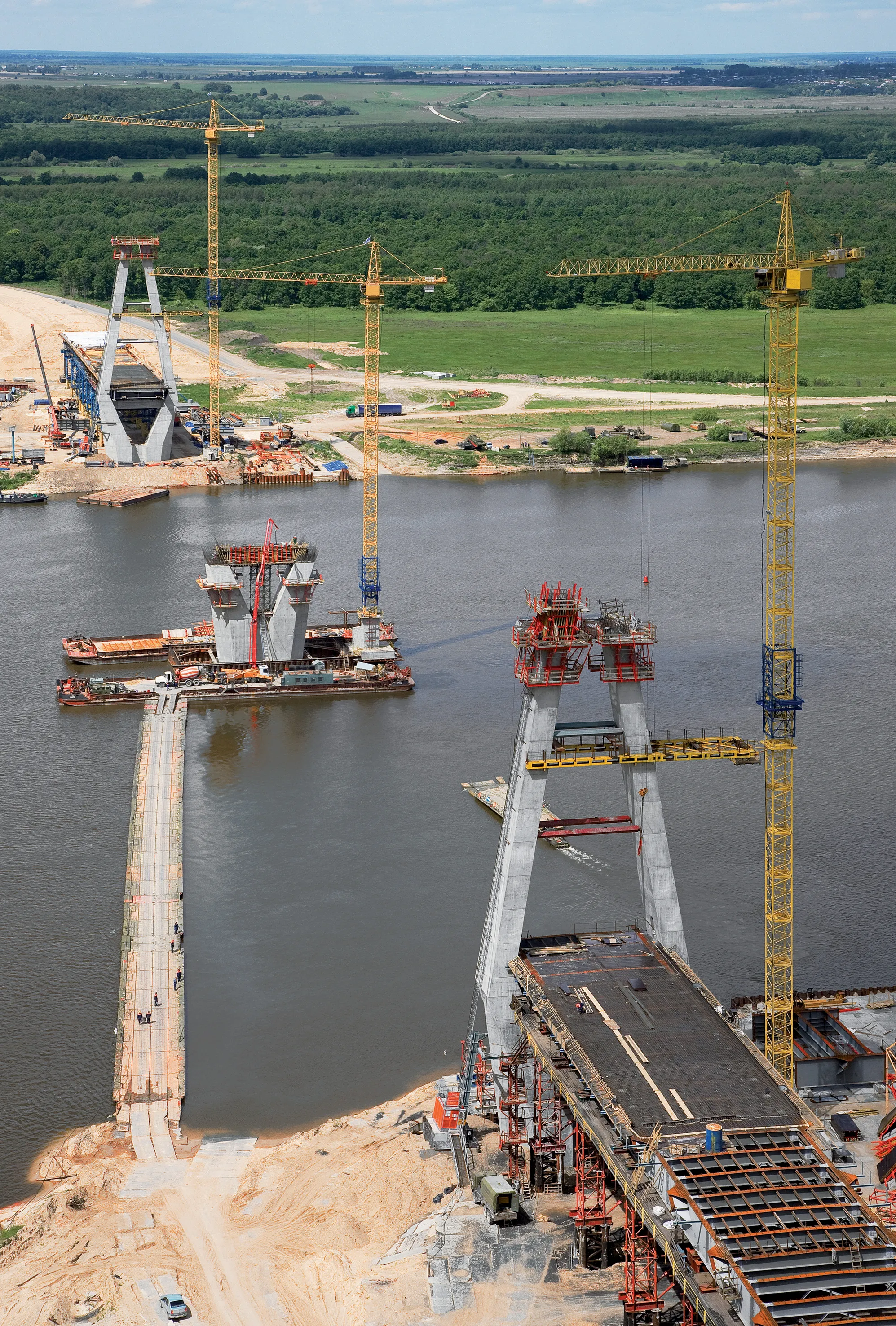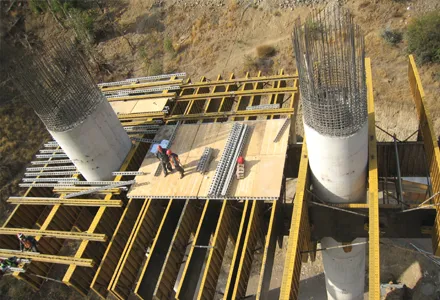The A98 single-lane motorway in Germany is being extended by a second pair of lanes. Work began in 2007 and required building a second bridge at Rheinfelden in the south-west of the country, parallel to the existing bridge, and identical in design and construction.
February 24, 2012
Read time: 3 mins

The A98 single-lane motorway in Germany is being extended by a second pair of lanes.
Work began in 2007 and required building a second bridge at Rheinfelden in the south-west of the country, parallel to the existing bridge, and identical in design and construction.
The eight-span continuous girder composite steel construction with a total span of 444m and standing on piers up to 45m high is scheduled to open to traffic in early 2010.
Munich-based contractor3208 Porr Deutschland won the German federal contract and requested the support of 3209 MEVA's formwork engineers in Munich and Haiterbach.
The seven piers stand up to 75m apart on foundations whose cross sections vary depending to the pier height, the load and the substrate. The largest is 11m x 13m x 2.4m (length, width and height). All foundations were formed using MEVA's large format Mammut formwork system with the highest possible concrete load capacity of 100 kN/m2.
The piers, including pierheads, are 16 to 42m high, and the eight sides of all piers taper towards the top, with different inclinations, some with a ratio of 1:70, some with 1:50. To achieve this efficiently and within a tight schedule, MEVA engineers developed two units of formwork inside wooden girders that could be adapted from pier to pier. The girders on the outside remained in a plumb-vertical position. The tapered side was achieved with conical-shaped square timbers on to which the forming face was fixed. With the inclined facing locked into the plumb-vertical construction, there was no need to change the construction for the pouring cycles further up. As the cross sections tapered, the forming unit's corner bracing was adjusted.
"This multi-use solution for all piers and cross sections saved much time and money. Another major benefit was that the solution required only one visible anchor in the middle. This enhanced the superb concrete finish achieved," says MEVA.
Climbing, done with the MEVA KLK 230 climbing formwork, proved its worth as an easy-to-assemble and operate solution.
The octagonal pierheads are approximately 5m high and cantilever with differing inclinations. They were formed using Mammut base frames onto which a plywood case was attached to achieve the required conical shape. As with the piers, the base frames on the outside were plumb-vertical. Fourteen differently shaped conical plywood cases were pre-assembled, making up four forming units on the MEVA KLK 230.
The abutments with a conical front at either end of the bridge are 15m long, 10m wide and 3m high, and were formed using MEVA's Mammut panels onto which inclined wooden brace frames were attached.
Work began in 2007 and required building a second bridge at Rheinfelden in the south-west of the country, parallel to the existing bridge, and identical in design and construction.
The eight-span continuous girder composite steel construction with a total span of 444m and standing on piers up to 45m high is scheduled to open to traffic in early 2010.
Munich-based contractor
The seven piers stand up to 75m apart on foundations whose cross sections vary depending to the pier height, the load and the substrate. The largest is 11m x 13m x 2.4m (length, width and height). All foundations were formed using MEVA's large format Mammut formwork system with the highest possible concrete load capacity of 100 kN/m2.
The piers, including pierheads, are 16 to 42m high, and the eight sides of all piers taper towards the top, with different inclinations, some with a ratio of 1:70, some with 1:50. To achieve this efficiently and within a tight schedule, MEVA engineers developed two units of formwork inside wooden girders that could be adapted from pier to pier. The girders on the outside remained in a plumb-vertical position. The tapered side was achieved with conical-shaped square timbers on to which the forming face was fixed. With the inclined facing locked into the plumb-vertical construction, there was no need to change the construction for the pouring cycles further up. As the cross sections tapered, the forming unit's corner bracing was adjusted.
"This multi-use solution for all piers and cross sections saved much time and money. Another major benefit was that the solution required only one visible anchor in the middle. This enhanced the superb concrete finish achieved," says MEVA.
Climbing, done with the MEVA KLK 230 climbing formwork, proved its worth as an easy-to-assemble and operate solution.
The octagonal pierheads are approximately 5m high and cantilever with differing inclinations. They were formed using Mammut base frames onto which a plywood case was attached to achieve the required conical shape. As with the piers, the base frames on the outside were plumb-vertical. Fourteen differently shaped conical plywood cases were pre-assembled, making up four forming units on the MEVA KLK 230.
The abutments with a conical front at either end of the bridge are 15m long, 10m wide and 3m high, and were formed using MEVA's Mammut panels onto which inclined wooden brace frames were attached.









